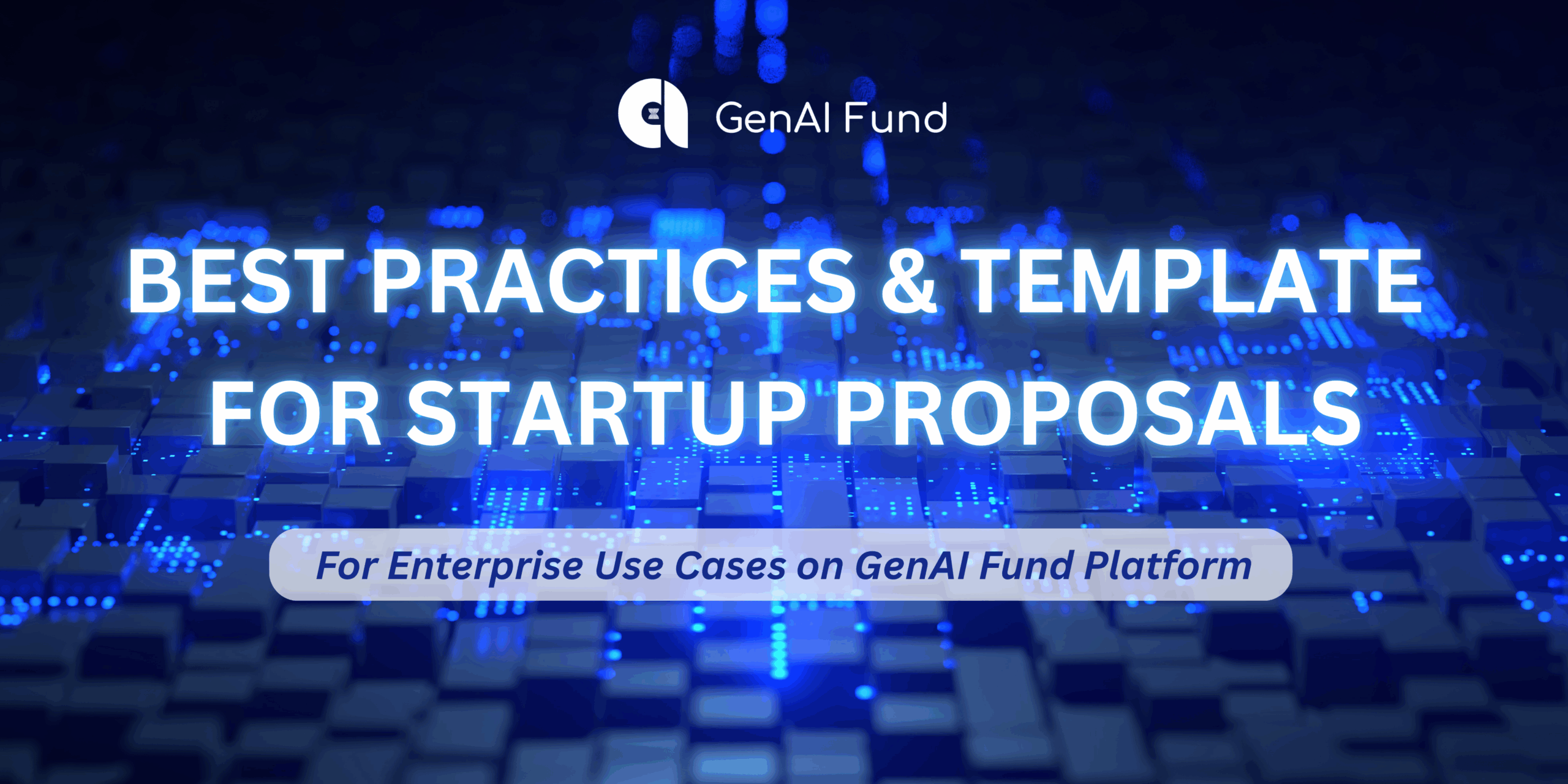Best Practices & Template for Startup Proposals
(For Enterprise Use Cases on GenAI Fund Platform)
This proposal is more than a sales pitch. Enterprises want to know if you are capable, relevant, and ready to solve their problem. Keep your proposal short (3–5 pages max), evidence-driven, and tailored to the specific use case.
1. Company Snapshot
What to include:
- Company name, website, HQ location
- One-liner solution description
- Stage & traction (users, revenue, pilots, funding if relevant)
- Key industries/customers (highlight if similar to the enterprise’s sector)
Best Practices:
- Keep it concise (½ page max).
- Focus only on credibility factors relevant to the enterprise.
- Avoid long “About Us” sections.
2. Capabilities & Proof
What to include:
- Core technology/platform (what you’ve already built)
- Key features that address the enterprise use case
- Evidence: deployments, case studies, pilot results, testimonials
- (Optional) Video demo or screenshots for clarity
Best Practices:
- Lead with what’s real today, and can touch on future roadmap (if relevant).
- Use proof points (e.g., “Deployed with X enterprise, 5,000+ users”).
- Show scalability and security (enterprises care about this).
- This is the most important section for enterprises.
3. Fit for the Enterprise Use Case
What to include:
- Restate the enterprise problem/use case in your own words
- Explain how your key features address it
- Clarify if your solution covers part of the problem, and explain how you’d approach solving the rest (e.g., via integration with existing systems or partners)
- Call out assumptions or small customizations needed
Best Practices:
- Be realistic — you don’t need to solve 100%, but you need to show how you’d approach it.
- Show how you fit into the bigger picture (integration, partnerships, collaboration).
4. Approach & Outcomes
What to include:
- Proposed PoC/pilot plan (scope, steps, timeline — typically 4–8 weeks)
- Success metrics (efficiency gain, cost reduction, revenue uplift, risk reduction)
- Expected business value for the enterprise
Best Practices:
- Keep it practical and short.
- Stick to 2–3 measurable success metrics.
- Focus on business outcomes, not just technical features.
- Outline phases simply: Setup → Run → Evaluate.
- Bring new ideas too: Enterprises often look to startups for fresh ways of solving problems. Don’t just answer the brief — suggest innovative angles or improvements they might not have considered.
5. Requirements, Budget & Next Steps
What to include:
- What you need from the enterprise: data access, infrastructure, SME input, etc.
- Budget clarity:
- If enterprise shared a budget → state clearly what you can deliver within that budget.
- If budget is TBC → propose a reasonable PoC budget range (e.g., “A 6-week PoC would typically cost $15K–$25K, depending on data scope”).
- If enterprise shared a budget → state clearly what you can deliver within that budget.
- Your commitment: team, support, readiness, timeline.
- Next step: suggest a low-risk pilot (e.g., “Start with a 6-week PoC”).
Best Practices:
- Be transparent — no hidden costs.
- Align with enterprise’s stated budget, or propose a realistic range if it’s unclear.
- Tie budget to outcomes: “$20K PoC expected to reduce processing cost by 40% in 2 months.”
- Make the CTA clear: “We recommend starting with a pilot in Q4 to validate results.”
Final Reminders for Startups
Enterprises care most about:
- Can you actually deliver? (Capabilities & Proof)
- Will it solve their problem? (Fit for Use Case)
- What’s the measurable value? (Approach & Outcomes)
- Is it affordable, transparent, and low-risk? (Budget & Next Steps)
Keep it short, clear, and credible. Show you’re a partner who can deliver results and bring fresh ideas.




